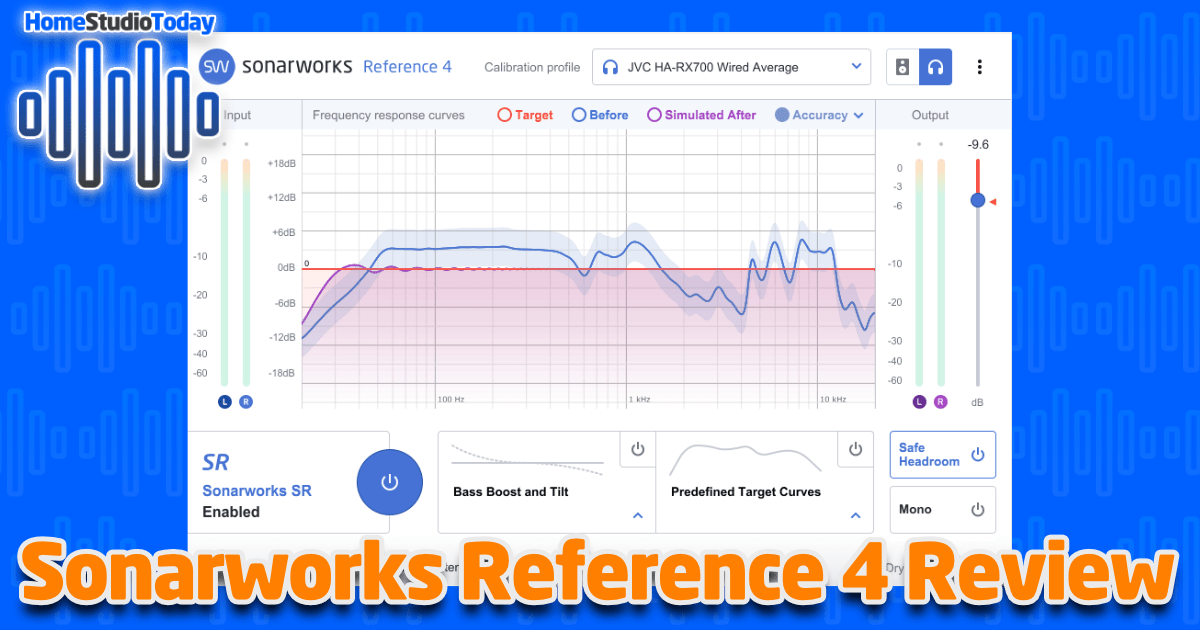


As illustrated on the room mode calculator at there are multiple potential standing‑wave modes in any given room.

The side walls and end walls will, of course, also potentially create standing waves.
Sonarworks reference 4 review series#
half the wavelength), I ought to expect one series of standing waves starting at 68.6Hz. Knowing that the first standing‑wave frequency can be calculated through dividing the speed of sound (343m/s) by twice the room height (ie. My room, for example, has a ceiling‑to‑floor dimension of 2.5m. Standing waves will occur at frequencies where the dimension between boundaries equals half the wavelength (and multiples of it), and it’s not rocket science to do a quick measurement of your studio room dimensions to identify some frequencies that might cause trouble. That’s a result of standing waves between room boundaries. We’ve all no doubt experienced the phenomenon of moving the listening chair back away from the monitors and finding that the volume level of specific low frequencies changes. It is these peaks and dips that Sonarworks aim to equalise and flatten.Īlong with boundary reflections, real‑world rooms also play host to resonant standing waves, defined generally by the distance between room boundaries, and these will result in significant peaks and troughs in volume level at different locations in the room. Sometimes the interference will be constructive, and a response peak will result, and sometimes it will be destructive, which will result in a response dip. But reflected sound, thanks to the fact that it has travelled further and is delayed, will also interfere with the direct sound. Reflected sound that arrives within a few milliseconds of the direct sound, known as early reflections, will be integrated by the brain, and although the direct sound will still dominate, the tonal character perceived for the audio event will be a composite of the direct sound and early reflections. The way our ears and brain deal with these multiple arrivals of sound energy depends firstly on how far apart in time they are, and secondly on their relative levels. And that reflected energy will be imprinted with both the off‑axis response of the monitors and the particular absorption characteristics of the room boundaries it has reflected from. In the real world, however, we hear not just the direct sound energy that leaves the monitors, but also energy reflected from the room boundaries. If we were all lucky enough to work in studio rooms of infinite size, or in rooms with boundaries that offered perfect absorption of acoustic energy, there’d be no need for applications like Sonarworks to compensate for room acoustics because we’d always hear just the flat, direct sound from the monitors.

But to my mind it ought to be the tool you turn to, and use thoughtfully, after you’ve got your existing room and monitoring working as well as possible - not before. Sonarworks 4 is a persuasive and powerful solution to a common problem and it’s really hard to fault the way it works.
Sonarworks reference 4 review software#
Sonarworks software has been widely lauded for its ability to correct the sound of headphones.


 0 kommentar(er)
0 kommentar(er)
